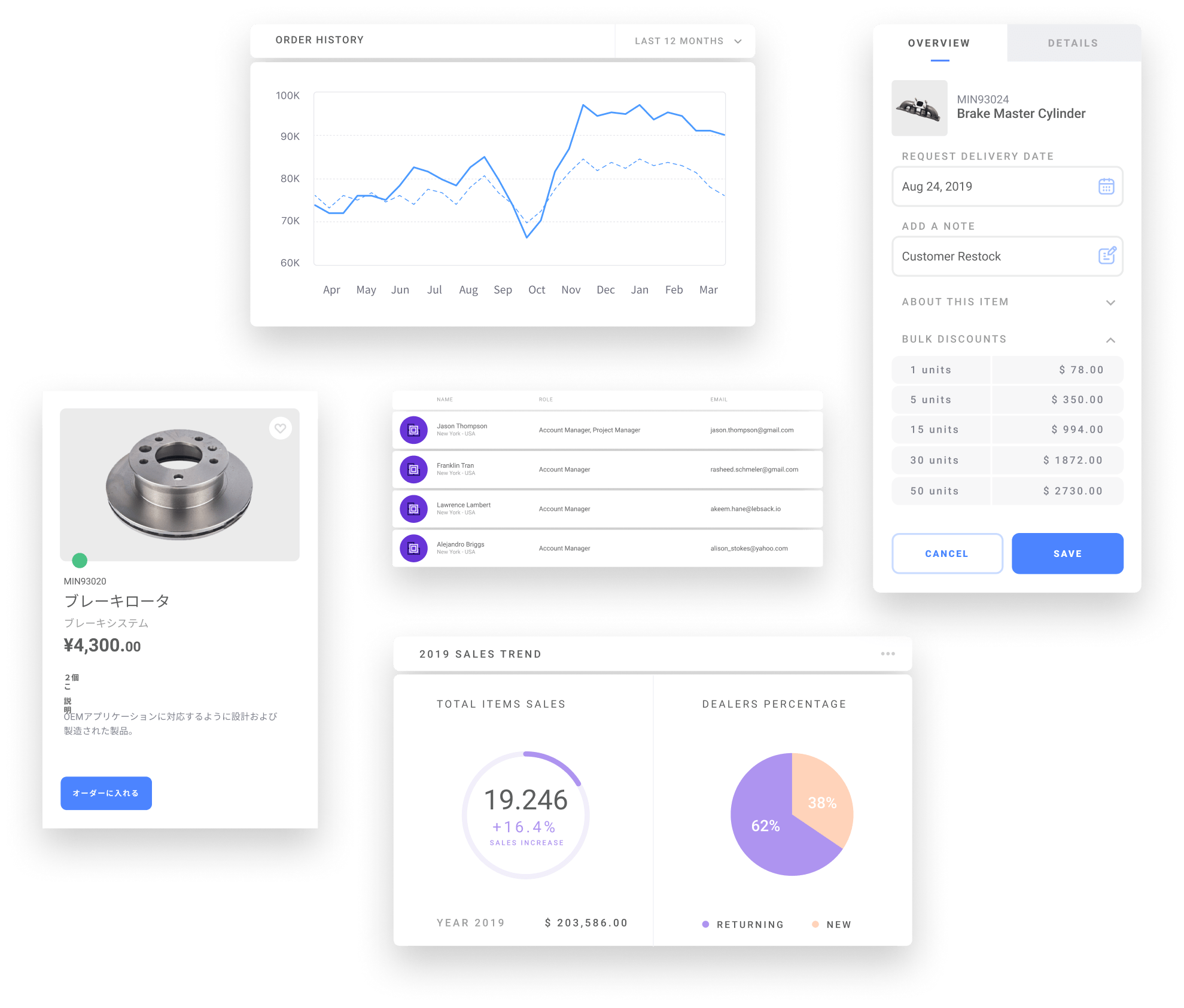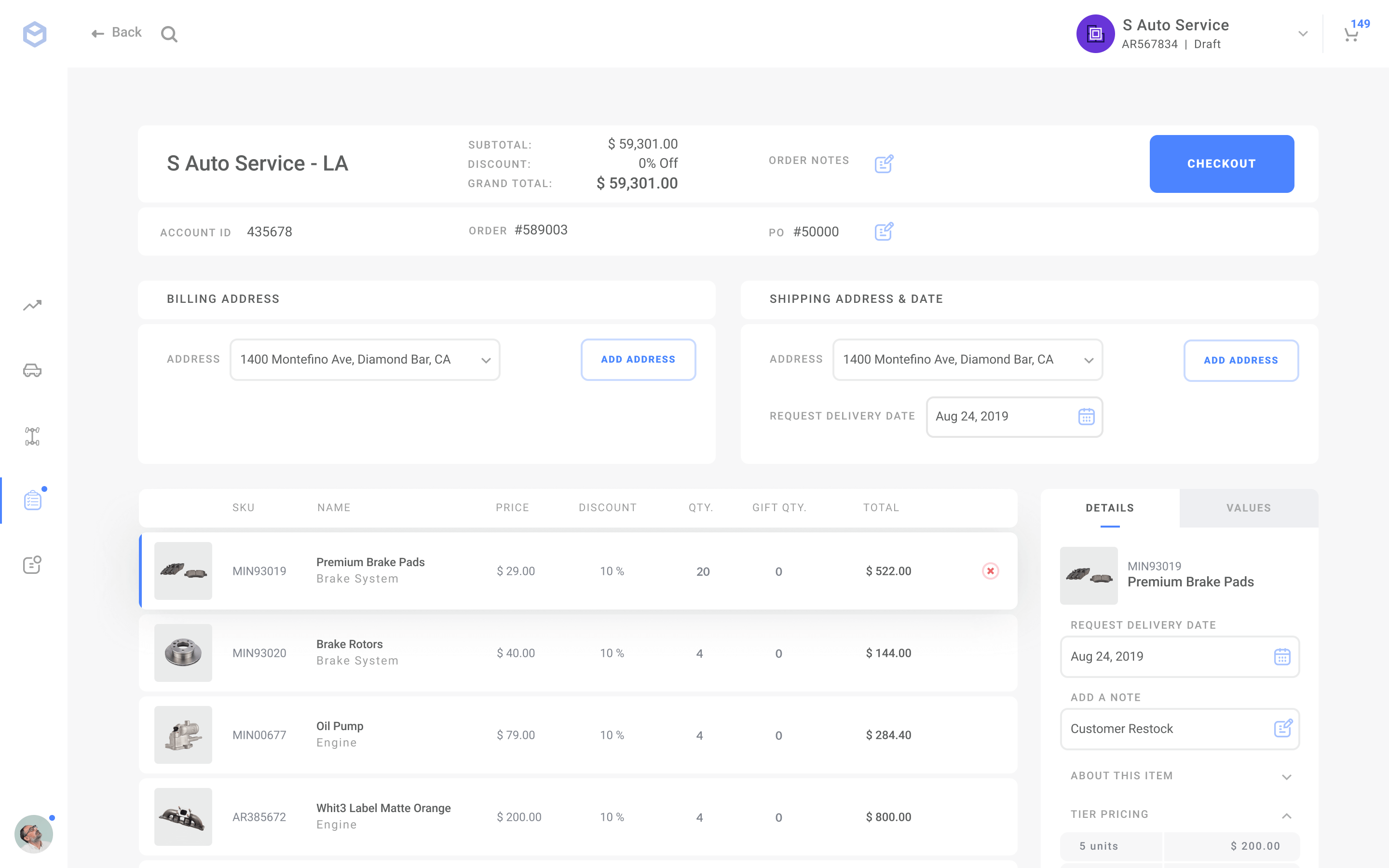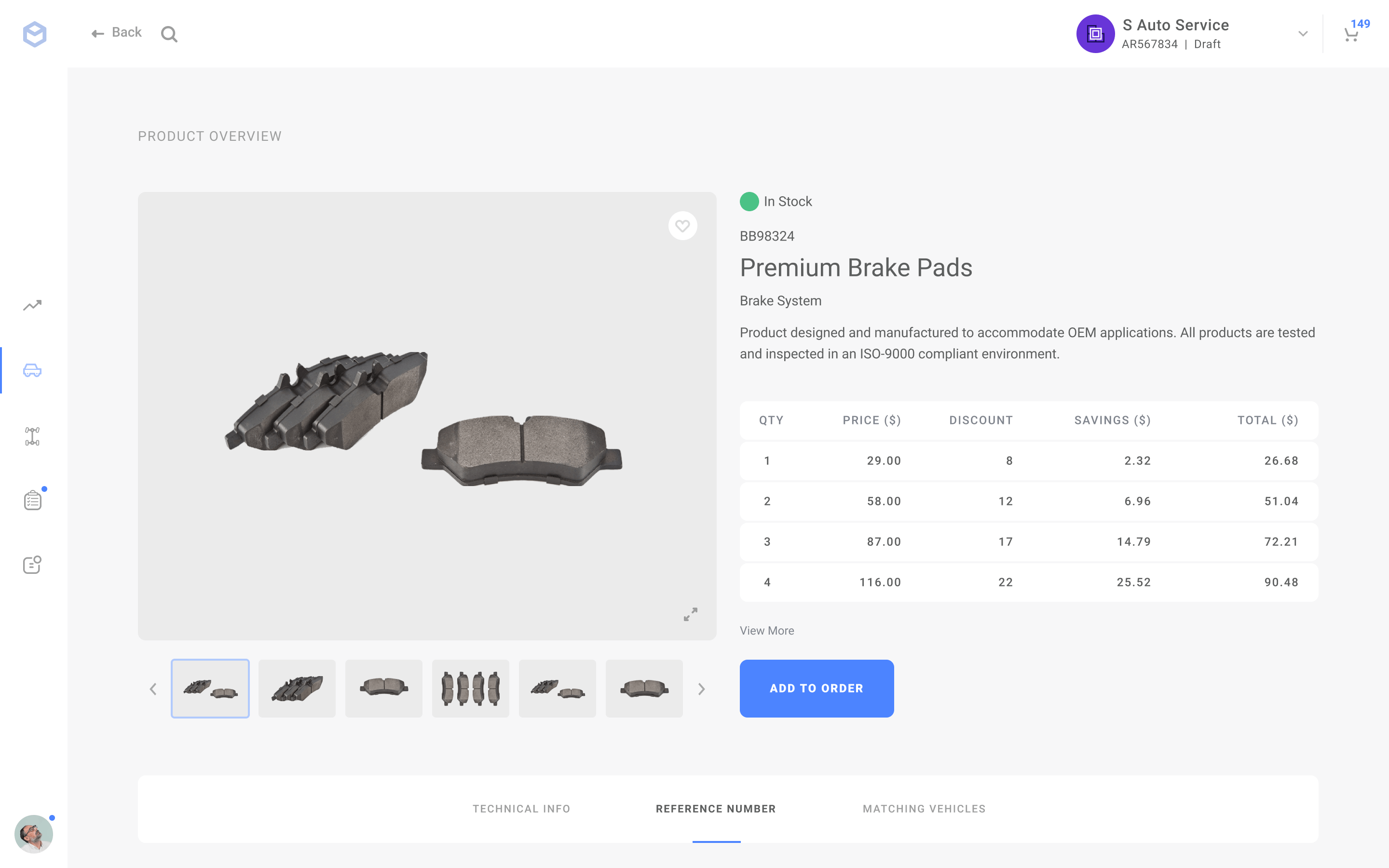The second part to consider is experience. B2B digital commerce focuses on known users, long relationships, and multi-contact journeys involving sales and service teams. B2C experiences prioritize casual browsing for anonymous, individual users, rather than on efficiency for B2B buyers purchasing on behalf of accounts. A lot of what makes sense for B2C doesn’t work for B2B, and trying to tweak B2C features for B2B situations will result in a longer implementation time and more customization to support.
For example, AI-driven product recommendations are a popular feature today, and many B2B sellers are quick to put recommendations like Amazon’s “Also-Boughts” on their product pages. Those are designed to encourage an individual to add an item to their cart on impulse, increasing the average order value. However, many B2B buyers don’t have in-the-moment control over what they’re allowed to purchase and won’t react to Also-Bought recommendations in the same way. Instead, they will appreciate recommendations that help them find the right product when they’re searching, such as recommendations imbued with deep product information like product interdependencies, or recommendations around what product offering they should look at based on their industry.
A technology solution that has already thought through problems like these and built support for these types of B2B experiences takes companies one step closer to a differentiated experience, saving on both the time of customization and the research required to identify that pain point in the first place.
In addition, companies that have risked the early adoption of CX solutions have found that
“B2C CX management tools fall short in addressing the clear complexities of the multi-contact experiences in a B2B world.” The more complex the product offerings, the more valuable a Sales Representative or live Service Representative can be for B2B buyers, who will often prefer that personal touch and reward it with long-term loyalty. This requires a solution that enables sales and service teams to use the digital commerce site as a tool for customer context so they can proactively respond to customer needs.
It takes a focused, dedicated B2B-first approach to keep in mind these kinds of complexities, and companies that partner with technology solutions will benefit from being able to support these experiences sooner and avoid having to force-fit B2C tools for their needs.






